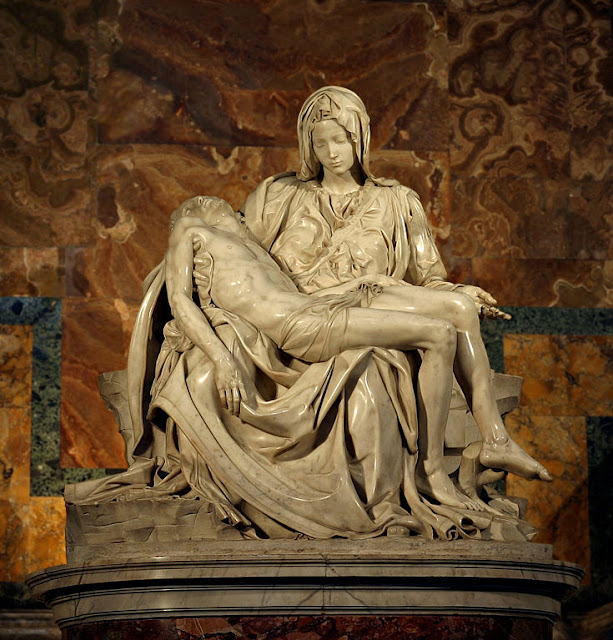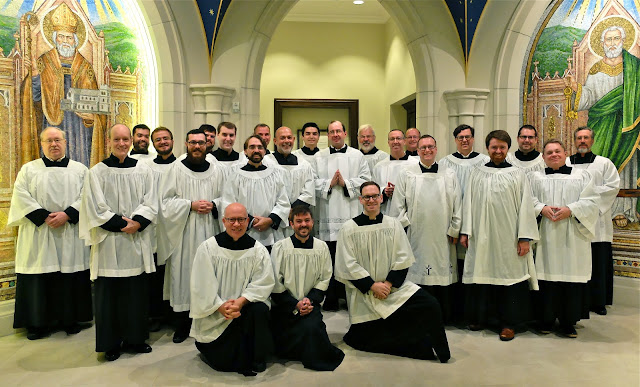A word to Ordinary Form Parish Music Directors... .
... and what those same Ordinary Form (diocesan) music directors can learn from the experience of a typical Ordinariate community.
From the Catholic Herald (Wednesday, 20 Dec 2017), in part:
Catholic Church music directors throughout the country recognised “that we should give young people what they want,” he said. “They want a sense of beauty. They want a sense of mystery.”
(Scott) Turkington discovered that Gregorian chant was an effective tool in teaching children the importance of sacred music in the church.
“If you give Gregorian chant to kids, they love it,” Turkington said. [Having taught chant to college students and public school choirs at the high school and middle school levels for the past 30 years, I concur.]
["..."]
“There’s been a flowering of publication of English-language versions of Gregorian melodies and changes that have emerged over the years,” McDonnell said. “Even if you are not using the original Gregorian chant in Latin, there is some sense of the chant style and the sacred nature of chant is being recaptured.”
[The Ordinariate brings to the Church sublime settings (of the Propers, Psalms and the Ordinary) belonging to the vast and centuries tested repertory of English sacred liturgical music. The influence of the Anglican Patrimony upon the ears of the composers or compilers of contemporary English chant settings (for the Ordinary Form) is evident. English plainchant, Anglican Chant and English sacred polyphony belonging to the Anglican Patrimony has the advantage of being tried and true. The lyrical quality of hieratic (Prayer Book) English—thee, thou, beseech, vouchsafe, etc. (See note below, On Sacred Language)—in which music of the Anglican Patrimony found in the Ordinariate is written, makes the Ordinariate vernacular settings an attractive first choice for diocesan (Ordinary Form/Missal of Paul VI) communities that desire music of the highest order. The Ordinariate experience offers the Church the opportunity to repatriate an outstanding corpus of Proper and Ordinary chants and polyphonic Mass settings. Diocesan (Ordinary Form) parishes, music directors for starters, would do well to investigate and apply the experience of Ordinariate communities that routinely enjoy the inclusion of authentic English (and Latin) sacred polyphony, hymnody and chant.]
The increased popularity of the chant in recent years has extended beyond the Catholic Church, McDonnell said. “There are people who don’t really have a connection to the institutional Church, but who find Gregorian chant as attractive.” [Beauty evangelizes! See here/hear: https://fssp.com/requiem-the-fraternity/]
The appreciation of the chant’s beauty is more than just the resonances of the music, but resides in the text, which are prayers, scripture and liturgy essential to the Mass, Turkington said.
[New publication! The Ordinariate Gradual, which captures the Anglican Patrimony, is in the final stages of development. A draft of the Gradual has been submitted to our Bishop by a priest of our community, an able priest expertly equipped in sacred music and the music of the Anglican Patrimony. The chants belonging to the Gradual have, for the most part, already been road tested in our community, and visitors remark how beautiful and how easily the Sarum chant settings are to sing. Stay tuned!]
.jpg)





Comments
Post a Comment
Your comments will be appreciated and posted if 1) they are on topic and 2) preserve decorum.
Stand by your word.